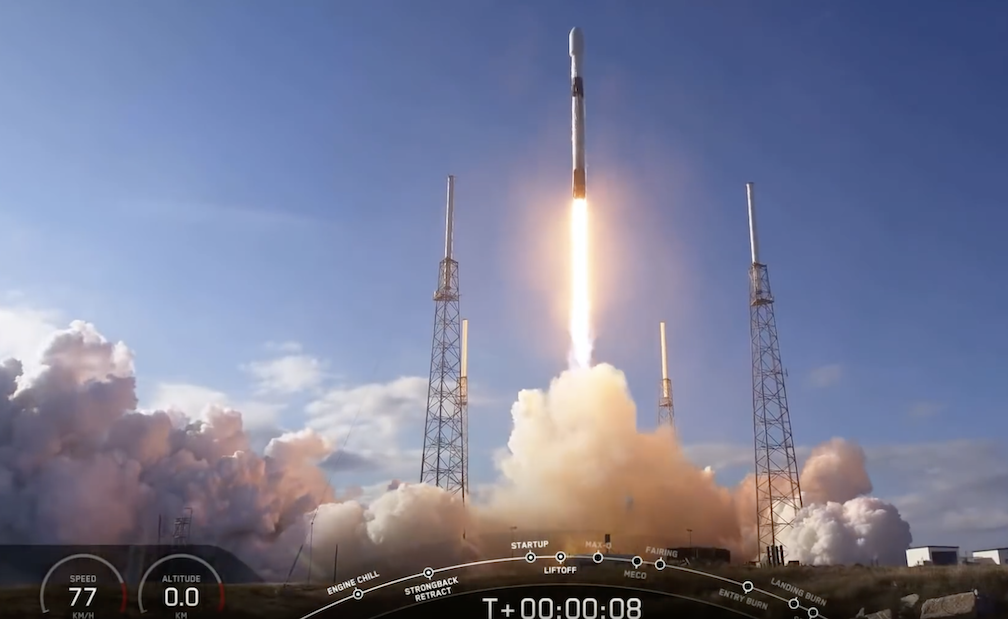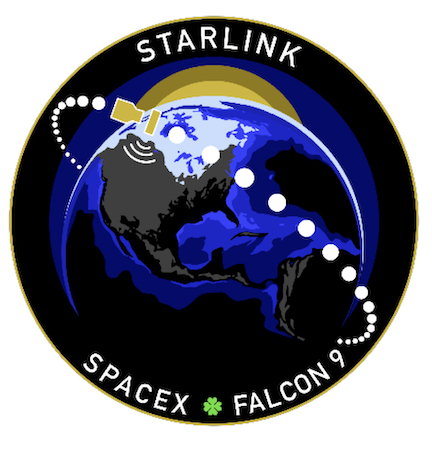

On Wednesday, January 29 at 9:06 a.m. EST, or 14:06 UTC, SpaceX completed its fourth launch of Starlink satellites from Space Launch Complex 40 (SLC-40) at Cape Canaveral Air Force Station, Florida.
Falcon 9’s first stage previously launched Crew Dragon on its first demonstration mission in March 2019 and the RADARSAT Constellation Mission in June 2019. Following stage separation, SpaceX landed Falcon 9’s first stage on the “Of Course I Still Love You” droneship, which was stationed in the Atlantic Ocean. One of SpaceX’s fairing recovery vessels, “Ms. Tree," caught one of the fairing halves.
There were two delays before Wednesday's successful launch. Monday, SpaceX confirmed that the launch of Falcon 9 from Space Launch Complex 40 (SLC-40) at Cape Canaveral Air Force Station, Florida was scrubbed due to strong upper level winds. Then again, Tuesday, weather conditions of high upper-level winds, were the reason for the launch being scrubbed with the hope then that Wednesday would see the 60 Starlink satellites succeed in their mission to provide high speed broadband internet to locations where access has been unreliable, expensive, or completely unavailable.

Falcon 9’s first stage previously launched Crew Dragon on its first demonstration mission in March 2019 and the RADARSAT Constellation Mission in June 2019. Following stage separation, SpaceX will land Falcon 9’s first stage on the “Of Course I Still Love You” droneship, which will be stationed in the Atlantic Ocean. Approximately 45 minutes after liftoff, SpaceX’s two fairing recovery vessels, “Ms. Tree” and “Ms. Chief,” will attempt to recover the two fairing halves.
The Starlink satellites will deploy at an altitude of 290 km. Prior to orbit raise, SpaceX engineers will conduct data reviews to ensure all Starlink satellites are operating
SpaceX is leveraging its experience in building rockets and spacecraft to deploy the world's most advanced broadband internet system. With performance that far surpasses that of traditional satellite internet, and a global network unbounded by ground infrastructure limitations, Starlink will deliver high speed broadband internet to locations where access has been unreliable, expensive, or completely unavailable.
Each Starlink satellite weights approximately 260kg and features a compact, flat-panel design that minimizes volume, allowing for a dense launch stack to take full advantage of Falcon 9’s launch capabilities. With four powerful phased array antennas on each satellite, an enormous amount of throughput can be placed and redirected in a short time, for an order of magnitude lower cost.
The system is on the leading edge of on-orbit debris mitigation, meeting or exceeding all regulatory and industry standards. At end of their life cycle, the satellites will utilize their on-board propulsion system to deorbit over the course of a few months. In the unlikely event their propulsion system becomes inoperable, the satellites will burn up in Earth’s atmosphere within 1-5 years, significantly less than the hundreds or thousands of years required at higher altitudes. Components of each satellite are fully demisable.
Starlink is targeting service in the Northern U.S. and Canada in 2020, rapidly expanding to near global coverage of the populated world by 2021.

